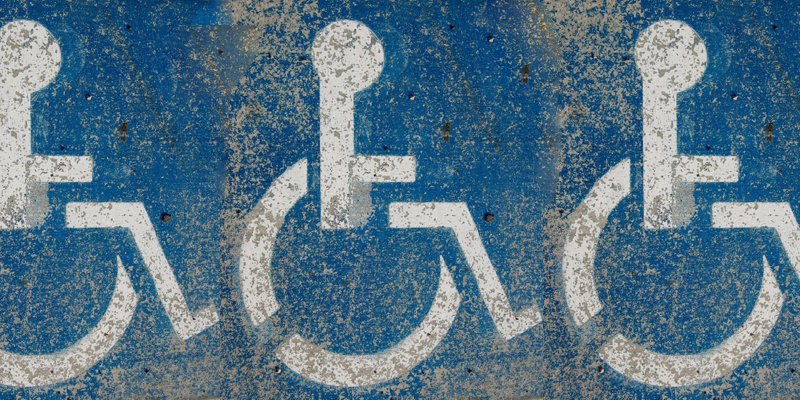
When you have a disability, you have to make adjustments to your daily life. You may have features in your home that make it easier for you to complete household chores or take care of personal hygiene. When you go to events, attend school or travel to the office, it may be necessary for you to access parking spaces that are closest to the entrances for these buildings.
If you’re a North Dakota resident, there are special regulations to keep in mind when you’re applying for a handicap parking placard. Here is some information to keep in mind to ensure the application process is as quick as possible.
Qualifications
In North Dakota, you can apply for a handicap parking placard if you have to use portable oxygen. If you have to use orthopedic shoes for mobility or have an orthopedic issue that keeps you from walking long distances, you can get a parking permit. The state will also give you a disabled placard if you have a neurological condition that limits your mobility. North Dakota also gives you a permit if you can’t walk more than 200 feet without having to take a break or get assistance from someone. If you have a heart condition, vascular disease or a pulmonary condition that doesn’t allow you to walk long distances without pain or discomfort, you qualify for a parking permit. If you have lung disease, your forced expiratory volume must be less than one liter for one second. Or, you must have an arterial oxygen tension of 60mm or less.
The state of North Dakota will also give you a handicap parking permit if you have a cardiac condition that is a Class III or Class IV according to the American Heart Association.
If your disability falls into one of these categories, you can fill out an application for a handicap parking permit. Your physician will also need to fill out the form and sign it to verify your disability. If your doctor is not able to complete the application, a chiropractor or advanced practice registered nurse can complete the form for you.
What Types of Disability Placards Are Available?
If you have a permanent or non-reversible condition, the state will issue you a blue placard. You won’t have to contact your physician when it’s time to renew your permit in most cases. However, if you need re-certification from a doctor, you should contact your medical professional to complete your renewal application before the expiration date.
If you have a temporary disability, the state will give you a red placard. This permit is valid for three months at a time. Each time you apply for the permit, you must have physician verification of your disability. A temporary disability is defined as a condition like a broken arm or leg or impaired mobility due to surgery or childbirth. Individuals who have a sports injury or have recently been in car accident can also apply for a temporary disability permit.
Where Do You Receive Your Plates and Permits?
In North Dakota, all motor vehicle licensing locations can issue you a permanent or temporary parking placard. If you qualify for a license plate, you can receive this from a motor vehicle licensing location near you. Keep in mind that permits and plates are not available at Driver’s License divisions.
Where to Get an Application Form
You can receive your handicap permit application at any motor vehicle licensing division in the state. If you’re applying as an individual you should fill out the SFN 2886 Application for Mobility Impaired Permit application. If you own or operate an organization that transports handicapped individuals, you can fill out the organization form SFN 54306 Application for Care Providers Mobility Impaired Parking Permits.
Additional Requirements and Charges
You must submit a complete and signed application to your nearest motor vehicle location. You and your doctor must also date the forms. Permanent placards are issued free of charge – you can receive up two placards. Temporary placards are $3. If you need to renew your temporary permit, you’ll have to pay an additional $3.
How to Display Your Placard
Remember to hand your disability parking placard from your rearview mirror whenever you park in a handicap space. This also applies to vehicles that transport disabled individuals. The placard must be intact – if any part of it is obscured or difficult to read, you’ll need to visit a motor vehicle location to receive a new one. Your placard must be removed when the vehicle is in motion.
Renewing Your Placards
If you have a permanent disability placard, you should renew the permit every three years. Before your permit expires, you’ll receive a notice in the mail with instructions for renewing your placard. Valid permanent disability placards must be renewed by December 31 of the expiration year and every three years afterwards. Temporary placards cost $3 to renew and you must have your doctor sign off on your application if you’ll need the permit for longer than three months.
Getting Mobility Impaired License Plates
If you want to get a permanent disability license plate and currently have two placards, you’ll have to surrender one of the placards to the nearest motor vehicle licensing location. Your name must be on the title for the vehicle. There is a $5 fee for mobility impaired license plates in North Dakota. Handicap license plates are not available for individuals with a temporary disability permit. If you opt to continue using the placards without a license plate, you can only use the permits for vehicles in which you are the passenger or driver.
You should have one parking placard in your name if you have a disability license plate. However, you don’t have to display the placard when you park in a handicap space since your plate will be evident.
These tips will help you get through the application process easier so you can experience the convenience of more efficient parking.
